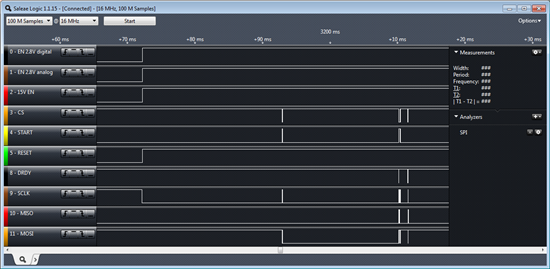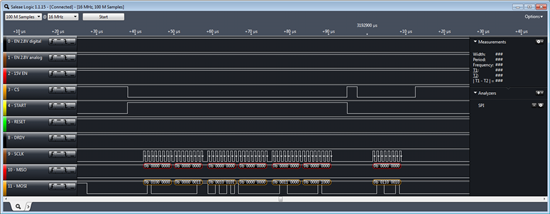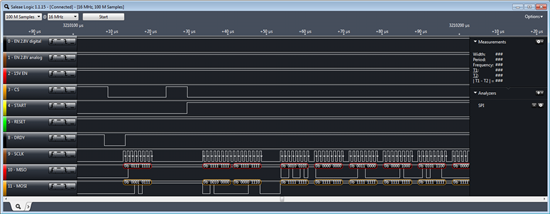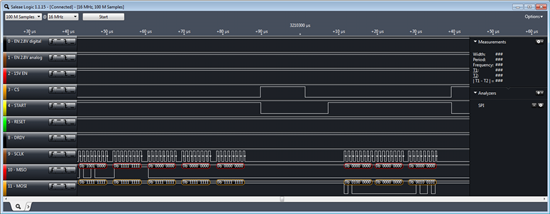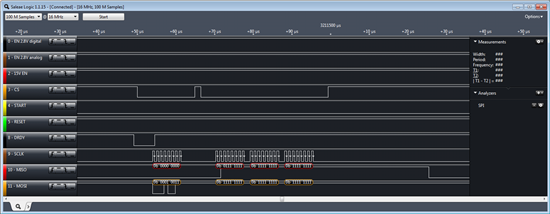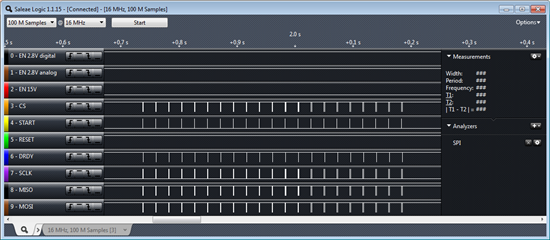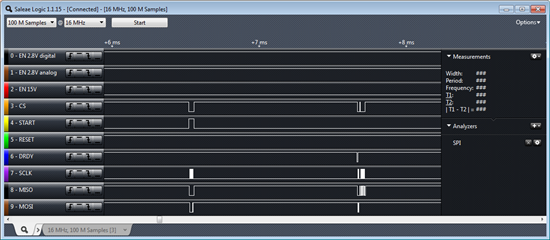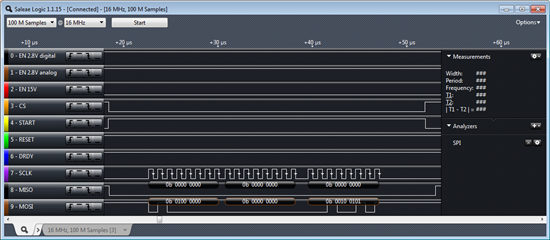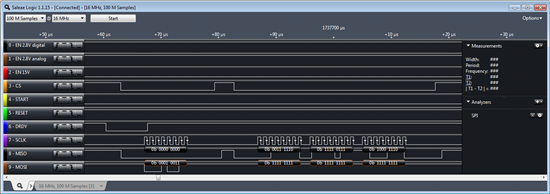I'm working on an application where we need to power up the ADS1248, acquire a reading, then power it down as quickly as possible.
Is this the correct sequence to go about doing this?
- Power up DVDD, AVDD
- Wait 2^16 clocks @ 4.096 MHz = 16 ms (minimum)
- SPI write: write first 4 registers with desired settings (VREF control always on, on-board reference, MUXCAL = normal, PGA = 1, DOR = 1000sps)
- SPI write: Self offset calibration (SELFOCAL)
- Poll DRDY until it goes low
- SPI write: Stop reading data continuously (SDATAC)
- SPI read: read all registers to confirm that they were properly written
- SPI write: write register 0 to select MUX input pair
- Poll DRDY until it goes low
- SPI write: read data once (RDATA)
- SPI read: clock in 24 bits of data
Overview:
Steps 3-4
Steps 5-7
Steps 7-8
Steps 9-11


